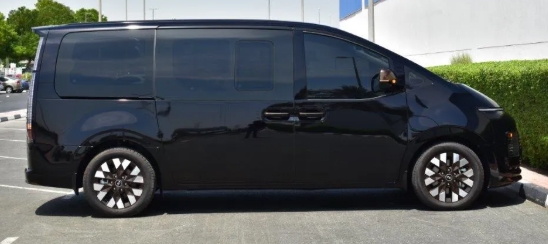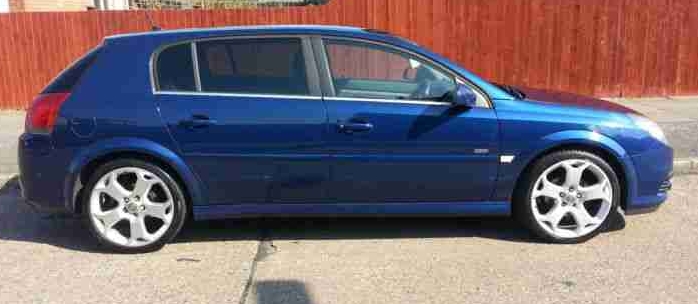From Workhorse to Starship: The Rapid and Radical Evolution of the Hyundai Staria
In the automotive world, evolution is typically a gradual process. A model is introduced, refined over several years with mid-cycle facelifts, and then replaced by a new generation that carries forward familiar DNA. Then there is the Hyundai Staria. When it was unveiled in 2021, it wasn’t an evolution; it was a revolution. It replaced a long-serving and deeply traditional van with a vehicle that looked as if it had driven directly off the set of a futuristic sci-fi film. In its short but impactful history, the Staria has not only redefined its segment but has also rapidly expanded its own lineup, evolving from a simple van replacement into a diverse platform catering to everyone from commercial couriers to VIPs and adventurous families. This is the story of its swift and fascinating evolution.
The Predecessor: The End of the Starex Era (1997-2021)
To understand the magnitude of the Staria’s arrival, one must first appreciate its predecessor, the Hyundai Starex (also known as the H-1, iLoad, iMax, and i800 in various global markets). The Starex was a quintessential workhorse. The second generation, produced from 2007 to 2021, was a rugged, reliable, and immensely practical vehicle. Built on a rear-wheel-drive, truck-like platform, it was prized for its durability and cavernous interior. It served dutifully as a family shuttle, an airport taxi, a delivery van, and a tradesperson’s mobile office.
However, by the late 2010s, the Starex was showing its age. Its design was utilitarian and dated, its driving dynamics were van-like, and its interior technology lagged far behind Hyundai’s increasingly sophisticated passenger cars. As Hyundai transformed its brand image with its “Sensuous Sportiness” design language and cutting-edge technology, the Starex remained a relic of a previous era. The stage was set for a dramatic change.
The Arrival: 2021 – A Monolith on Wheels
In April 2021, Hyundai pulled the covers off the Staria, and the automotive world took a collective gasp. The name itself, a portmanteau of “star” and “ria” (a long, narrow inlet), hinted at its futuristic, nautical-inspired design. There was nothing gradual about this transition. The Staria shared no visual cues with the Starex it replaced.
Its design was dictated by an “inside-out” philosophy, a forward-thinking approach where the interior space and user experience were designed first, with the exterior shell sculpted to accommodate it. The result was a stunningly minimalist, monolithic form. Key features included:
- A Full-Width Horizontal DRL: A single, thin LED strip ran across the entire front, serving as the daytime running light and position lamp, creating an unmistakable light signature.
- Low-Set Headlamps: The main headlights were housed in a large, bold grille, a design choice that cleaned up the front fascia and gave it an imposing presence.
- Vast Panoramas of Glass: The Staria boasted enormous, low-slung panoramic windows, maximizing visibility and creating a sense of openness for passengers, akin to a futuristic lounge.
- A Modern Platform: Critically, the Staria moved away from the Starex’s commercial ladder-frame chassis. It was built on the Hyundai-Kia N3 platform, the same modern, front-wheel-drive architecture underpinning vehicles like the Santa Fe and Tucson. This shift promised car-like comfort, handling, and safety levels unheard of in its predecessor.
At launch, Hyundai immediately established a clear demarcation in the Staria lineup, creating two distinct branches to serve different markets: the standard Staria and the upmarket Staria Premium.
.
THIS is GOOD stuff if your car is in need:

.
The Core Lineup (2021 – Present): A Tale of Two Starias
1. The Staria (Commercial and Standard Passenger Models)
This branch of the family tree was designed to be the direct, albeit modern, successor to the Starex’s utilitarian roles.
- Years Produced: 2021 – Present
- Models and Trims: The lineup varies by market, but generally falls into these categories:
- Staria Cargo / Van / Load: This is the pure commercial version. It typically features two or three seats up front and a vast, windowless cargo bay in the rear. In markets like Australia and New Zealand, it is marketed as the “Staria Load.” A key feature is the option of twin-swing “barn doors” at the rear instead of the standard liftgate, a crucial element for forklift loading and tight urban deliveries.
- Staria Wagon / Tourer: This is the passenger-carrying workhorse, available in various seating configurations. In its home market of South Korea, it is offered in 9-seater and 11-seater (Tourer) layouts, targeting shuttle services, large families, and tour operators. These models feature more basic interiors with durable cloth seats and fewer luxury amenities, prioritizing practicality and passenger count over opulence.
2. The Staria Premium (Luxury Passenger Models)
This is where Hyundai truly broke new ground. The Staria Premium (known as the Staria Lounge in South Korea and other select markets) was designed to compete not just with other minivans, but with luxury VIP shuttles.
- Years Produced: 2021 – Present
- Models and Trims:
- Staria Premium / Elite / Highlander: This model is distinguished externally by a unique mesh-pattern grille, tinted brass chrome accents, full LED lighting, and exclusive 18-inch alloy wheel designs. Internally, it is a world away from its commercial sibling.
- 7-Seater Configuration: The flagship model, featuring two “Premium Relaxation Seats” in the second row. These are electronically-controlled captain’s chairs that can recline almost flat at the touch of a button, complete with leg rests, heating, and ventilation. This configuration transforms the Staria into a genuine executive transport vehicle.
- 9-Seater Configuration: A more family-oriented luxury option, offering more seating while retaining many of the premium trim elements, such as Nappa leather upholstery, a 10.25-inch digital instrument cluster, a large central touchscreen, dual sunroofs, and extensive ambient lighting with 64 color choices.
Expanding the Universe: Special Editions and Niche Adaptations
A true sign of a platform’s success and versatility is its ability to spawn specialized variants. In just a few years, Hyundai has skillfully evolved the Staria to fill specific niches, demonstrating the flexibility of its initial design.
- Staria Kinder (2021 – Present): Launched in South Korea, the “Kinder” (German for “children”) is a factory-built kindergarten school bus. Finished in bright safety yellow, it comes equipped with specialized seating, safety belts configured for children, and a comprehensive set of warning lights and alarms to meet strict regulations for child transport.
- Staria Camper (2022 – Present): Capitalizing on the global trend of “van life,” Hyundai introduced the Staria Lounge Camper. This factory-converted model is a complete recreational vehicle. Key features include an electric pop-up roof tent, an integrated side awning, a rear kitchenette with a refrigerator and sink, an external power supply, and a versatile interior where seats fold flat to create a sleeping area. It’s offered in both 4-seater and 11-seater configurations, catering to both couples and larger families.
- Staria Lounge Limousine (2022 – Present): To push the luxury envelope even further, Hyundai released the Lounge Limousine in its domestic market. This model features a high-roof conversion, adding significant headroom and an even greater sense of space. The interior is pure VIP-class, dominated by a massive 25-inch smart monitor that descends from the ceiling, a “Starry Sky” ambient lighting system, and a premium sound system, squarely targeting corporate executives and celebrities.
Powertrain and Technological Evolution
The Staria’s evolution also extends to its mechanical and technological offerings.
- Initial Powertrains (2021): At launch, the Staria was offered with two primary engines depending on the region:
- 2.2L CRDi VGT Diesel: The mainstay of the lineup, this turbocharged diesel engine is tuned for strong torque, making it ideal for hauling heavy loads or a full complement of passengers. It produces around 175 horsepower and 430 Nm of torque, paired with either a 6-speed manual (on base/commercial models) or a smooth 8-speed automatic transmission.
- Smartstream 3.5L G6DIII MPI/GDI V6 Petrol: Offered in markets like Australia, South Korea, and the Middle East, this gasoline engine provides smoother, quieter operation and higher horsepower (around 270 hp), appealing to private buyers who prioritize refinement over the diesel’s low-end grunt. It is exclusively mated to the 8-speed automatic.
- The Hybrid Leap (2024): The most significant powertrain evolution occurred in early 2024 with the introduction of the Staria Hybrid. Responding to the global demand for greater efficiency and lower emissions, Hyundai integrated its proven 1.6-litre Turbo-Hybrid powertrain into the Staria platform. This system combines a turbocharged gasoline engine with an electric motor, delivering a balance of performance and fuel economy that was previously unattainable in a vehicle of this size. The introduction of the hybrid variant ensures the Staria remains competitive and future-proofed in an increasingly eco-conscious market.
Throughout its short life, the Staria has also benefited from Hyundai’s full suite of SmartSense Advanced Driver-Assistance Systems (ADAS), including Forward Collision-Avoidance Assist, Lane Keeping Assist, and Blind-Spot Collision-Avoidance Assist, firmly placing it at the forefront of safety in the van segment.
Conclusion: A Continuing Mission
The evolution of the Hyundai Staria is remarkable not for its length, but for its speed and ambition. In just a few years since its 2021 debut, it has completely transformed expectations of what a multi-purpose vehicle can be. It has successfully replaced a beloved workhorse while simultaneously creating an entirely new market for itself as a stylish and luxurious people mover.
From the spartan Staria Cargo to the opulent Staria Lounge Limousine, and from the adventurous Staria Camper to the efficient Staria Hybrid, the platform has proven to be incredibly versatile. It is a testament to the success of its foundational “inside-out” design and modern N3 platform. The Hyundai Staria began its journey looking like a vehicle from the future, and with its continuous and rapid evolution, it continues to define the future of its class. Its mission is far from over.







